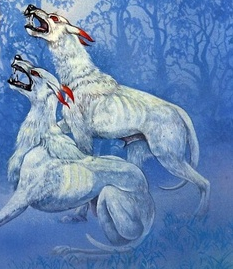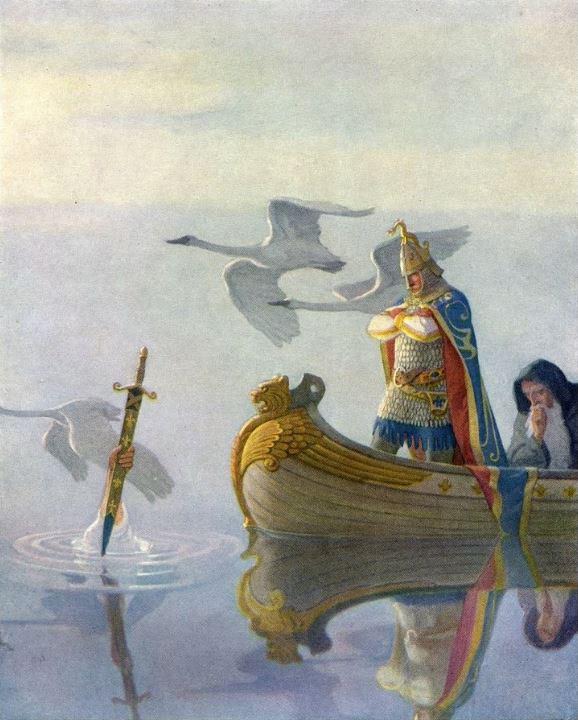
Every so often I like to take a break from reading fiction to enjoy some primary sources. This isn’t just for research. I like the primary sources, especially those in the Celtic and Arthurian realm.
Some of my favourite sources are the medieval Welsh tales assembled in what is known as the Mabinogi (or, Mabinogion), translated by Lady Charlotte Guest in the mid-19th century.

Lady Charlotte Guest
Some of the stories in the Mabinogi are retellings of the later medieval romances. However, some of the earlier tales, those known as the ‘Four Branches of the Mabinogi’, are believed to be more ancient tales from the days of the Celtic heroic age.
These ‘Four Branches’ are the most interesting to me and are a true escape into a world of magical beasts and enchanted realms. They are also believed to have been teaching texts for young Welsh princes of the day, intended to show them the characteristics of good, kingly rule and behaviour.
The Four Branches of the Mabinogi, which are tied together by the character of Pryderi, include the following tales:
Pwyll, Prince of Dyfed
Branwen, Daughter of Llyr
Manawydan, Son of Llyr
Math, Son of Mathonwy

Pwyll – by Alan Lee
Of the four branches, Pwyll, Prince of Dyfed is my absolute favourite. I have never tired of reading it since I first studied it in university. Not only is it full of magic, love, battles, monsters, and tales of honour and betrayal, but it’s also a perfect illustration of Celtic archetypes. We’ll go over a few of these, but first, here is the story in brief:
Pwyll, a mortal man, is a Prince of Dyfed who comes into contact with Arawn, King of Annwn, the Celtic Otherworld. The two become friends and switch places for a year so that Pwyll can help Arawn defeat a foe in his own world. Pwyll succeeds and becomes ‘Head of Annwn’. While he was away, Arawn ruled justly and fairly in his place, and Pwyll’s subjects ask him to continue the good rule, which he does.
Then, one day while Pwyll is out with his men, he is sitting on a magical hill when he sees a woman on a magical horse that cannot be caught up to. This is Rhiannon, a maiden from the Otherworld. On a third attempt to catch up to her, she stops for Pwyll whom she has been seeking. They are to marry, but their marriage is delayed by another suitor to Rhiannon, Gwawl, who tricks Pwyll into giving Rhiannon to him. But Rhiannon saves Pwyll from himself by giving him a magic bag which he uses to capture Gwawl.

Arawn’s Hounds
Pwyll and Rhiannon are married, and after a while, they finally have a son. But on the night of his birth, the boy is taken from them. The frightened servants conspire to blame Rhiannon, and accuse her of eating her child. Pwyll, as a ruler, must assign a punishment to his wife for this, and orders her to carry visitors to the castle upon her back while telling them what she did. The land suffers after this.
Luckily, Teirnon, a man loyal to Pwyll, finds the child when the monstrous hand that is taking his horses also leaves a baby. Teirnon slays the hand and saves the baby whom he and his wife foster. After some years, Teirnon realizes that the child resembles his lord, Pwyll, and so he and his wife take the child back to his parents, thus redeeming Rhiannon, giving Pwyll back his heir, and restoring the land once more.
This is a highly abbreviated version of the story, and if it does spark some interest, you should definitely read it. Pwyll makes a good read while curled up next to your hearth fire.
Of all the tales in the Mabinogi, this one feels like the neatest, if that makes sense. It has three sections – Pwyll in Annwn; Pwyll and Rhiannon; and the disappearance of Pwyll and Rhiannon’s son, Pryderi.
The number three and the occurrence of things in threes is a strong archetype in Celtic tradition.
Patterns of the number three occur in the number of Arawn’s dogs, and the number of times Rhiannon appears to Pwyll before she stops, for instance.
Magical animals are also common in Celtic tales; Arawn has three white hounds with red-tipped ears, and Rhiannon rides a magical white horse that cannot be caught. She is also followed by magical birds wherever she goes.

Rhiannon – by Alan Lee
The character of Rhiannon is one of my favourite things in Pwyll – her magic, her beauty, her strength. I also love her portrayal as the goddess Epona, who also rode a white horse, was accompanied by birds, or foals, and carried a magical bag that symbolized her role as a fertility goddess.
The theme of contact between the natural world and the Celtic Otherworld is also strong.
Pwyll meets Arawn in the forest, meets with Rhiannon who is from the Otherworld, and then there is the otherworldly monster that steals their child. There is a constant fluidity between the two worlds in the Four Branches of the Mabinogi.
The archetype of the magical hill is one that is strong in Celtic myth. Pwyll is sitting on a magical hill when Rhiannon appears to him. Hills were said to be gateways to the Otherworld. This reminds me of Glastonbury Tor which was believed to be a gateway to Annwn.

Glastonbury Tor
In the second part of Pwyll, we see the themes of the feast and the rival suitor where Pwyll’s judgement is tested. With the help of Rhiannon and her magical bag, another archetype, the marriage of the mortal and otherworldly being comes to fruition. This too is a common theme.
But there are more trials in the form of the demonization of Rhiannon which symbolizes the loss of the goddess’ power and the subsequent weakening of the land as Pwyll remains powerless to do anything but punish his wife in the face of the loss of their son.

Teirnon slaying the Monster – by Alan Lee
The finding and fostering of the lost child is also common to Celtic literature, and when Teirnon returns the child to Pwyll, Rhiannon is released from her bondage and the land blossoms once again.
Those of you with an Arthurian bent like me will spot the similarities right away in the fostering of Arthur with Sir Ector, and his teaching by Merlin. And when Guinevere is demonized in Arthurian tradition, Arthur falls into despair and the land suffers.
What is interesting in this tale is that Pwyll’s deficiencies are repaired by his contact with, and subsequent learning from, stronger figures than himself, namely Arawn, Rhiannon, and his loyal subject Teirnon. As the story progresses, we are witness to Pwyll’s growth in wisdom, courtesy and generosity – the things that make a king truly great.

Arthur
The Celtic archetypes in this tale and others help to bridge the gap between the natural world and Otherworld, to educate the hero, and light the hero’s way to effective sovereignty.
If you have never done so, I recommend that you read the tales contained in the Mabinogi, especially Pwyll, Prince of Dyfed. Let them envelop and transport you to that time long ago when goddesses emerged from the woods and Fairy lords befriended their mortal counterparts.
I hope you find these tales as entertaining and educational as I have.
Thank you for reading.

You can also read a bit more about the Mabinogi on the Camelot Project web pages.



